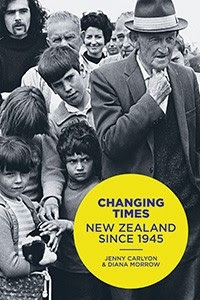 Much has been written about New Zealand’s attempts to find its place in the world as a fledgling nation and the role of rugby and war in creating a sense of nationalism in and around World War I.
Much has been written about New Zealand’s attempts to find its place in the world as a fledgling nation and the role of rugby and war in creating a sense of nationalism in and around World War I.
But a more important portion of our nation’s history has occurred post-World War II, and it’s this period that plays a more important role in both how we define ourselves as New Zealanders and how the past shapes our present.
After 1945 New Zealand shifted from the “insulated cocoon of empire”, clinging to a notion of England being the Motherland, and gradually moved into an adolescent stage before, some could argue, moving to a much more self-reliant young adult.
As a young nation, we’ve cast off parental links to England and are finding our way in the modern world.
Dr Jenny Carlyon and Dr Diana Morrow have attempted to work out how and why this has happened in their solidly researched and straightforwardly written Changing Times: New Zealand Since 1945.
Much of the history you know because you’ve probably lived much of it.
But what they’ve done is put things into context and, with the benefit of time and hindsight, explore the greater impact certain events had on future events.
They have packed New Zealand’s transformation from – to use their words – a society famous for dull conformity to one of the most ethnically, economically and socially diverse nations.
The book’s 12 chapters, arranged both chronologically and thematically, explore the key themes, ideas, people, places and events that define New Zealand’s history in the second half of the 20th century.
It’s accessible history, written without jargon and confusing analysis, that covers most of the important events of the past 65 years.
Encouragingly, they’ve used the voices of ordinary Kiwis to tell of their involvement in such things as the feminist movement, the gay rights lobby, environmental groups, anti-racism organisations and moral crusades, which in turns helps to tell your nation’s history.
